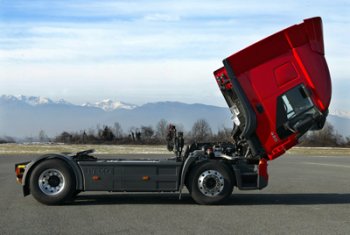|
Iveco, the
commercial vehicle division of Italian industrial group
Fiat, has pulled out of a bus joint venture in East China's
Jiangsu Province, according to a source from the company's
operations in China. The source told China Daily that Iveco
had sold its 50 per cent stake in the bus venture to the
Chinese side, Changjiang Bus Group, based in Changzhou,
Jiangsu Province, for just US$1. "This has been approved by
Chinese regulators and means we have severed our ties with
Changjiang Bus," the source said. The move paves the way for
Iveco's truck-making partnership with Shanghai Automotive
Industry Corp (SAIC) China's top vehicle producer.
Last month, Iveco agreed with SAIC to form a joint venture
and invested 120 million euros (US$151 million) in a new
heavy-duty truck plant in Southwest China's Chongqing
Municipality. The deal is awaiting government approval.
Iveco also currently runs a light-duty truck joint venture
with another Chinese automaker Nanjing Automobile Group in
Nanjing, the capital city of Jiangsu Province. However,
according to China's auto industry policy, foreign
automakers are only permitted to have a maximum of two joint
ventures with different Chinese partners making the same
types of vehicles, passenger vehicles or commercial
vehicles. Both trucks and buses are treated as commercial
vehicles.
|


 |
|
Last month, Iveco agreed with SAIC to form a joint
venture and invested 120 million euros (US$151
million) in a new heavy-duty truck plant in
Southwest China's Chongqing Municipality. |
|
|
 |
|
Iveco, the commercial vehicle division of Italian
industrial group Fiat, has pulled out of a bus joint
venture in East China's Jiangsu Province, according
to a source from the company's operations in China.
|
|
|
Iveco Therefore, Iveco had to cut its ties with either
Changjiang Bus or Nanjing Automobile in order to allow for
its marriage with SAIC to go ahead. decided to withdraw from
the venture with Changjiang Bus as this loss-making bus
venture was a millstone around its neck. In contrast, the
venture with Nanjing Automobile remains profitable. The
venture between Iveco and Changjiang Bus was launched in
2001 with an investment of almost US$100 million. Having an
initial production capacity of 6,000 to 7,000 units, it was
the biggest Sino-foreign bus operation at the time.
However, the
venture suffered heavy losses due to sluggish sales and poor
management. In August last year, Iveco sued Changjiang Bus
for embezzling 122.6 million yuan (US$15.1 million) from the
venture, sending a strong signal that it wanted to say
goodbye to Changjiang Bus. The source from Iveco's China
operations said the Italian firm had dropped the lawsuit as
it had succeeded in extricating itself from the bus venture.
According to the deal between Iveco and SAIC, their planned
truck joint venture will acquire a 67 per cent stake in
Chongqing-based heavy-duty truck manufacturer Chongqing
Hongyan Motor Co Ltd. The venture will have an annual
production capacity of 40,000 heavy-duty trucks and 30,000
engines by 2008. Analysts said Iveco's break-up with
Changjiang Bus and tie-up with SAIC is a reasonable shift in
its China strategy. "It indicates that Iveco is very
disappointed with Changjiang Bus. But SAIC, as China's
biggest and most profitable automaker, could be a good
partner for Iveco to continue to expand here," said Zhang
Xin, an auto analyst with Beijing-based Guotai & Jun'an
Securities Co Ltd.
For SAIC, which
now makes cars with General Motors and Volkswagen, an
alliance with Iveco would give it a foothold in the
heavy-duty truck market, Zhang said. China's heavy-duty
truck market has been oversupplied as a result of slowing
demand and overheated investment in recent years, which
boosted mergers and acquisitions in the sector. According to
industry data, China has the capacity to manufacture 750,000
heavy-duty trucks annually. However, industry analysts and
executives predicted that the nation's annual heavy-duty
truck demand would not exceed 400,000 units by 2010. Last
year, demand tumbled by one-third to 220,000 units due to
China's controls on fixed-assets investment, surging fuel
prices and some adjustments in industry regulations.
|
|
|
|